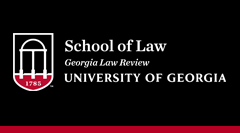Publication Date
2014
Abstract
Car crashes kill more teens each year than any other cause, and of the crashes in which they are involved, teens are overwhelmingly at fault. Teens crash at rates far higher than those of older drivers, and the younger the teen driver, the higher the risk-sixteen-year-old drivers have crash rates 250% higher than those of eighteen-year- olds. Driving experience does not explain the difference; younger beginners crash at rates higher than those of older beginners. Instead, younger teens' increased crash risk results primarily from immature regulatory competence. In other words, the capacities required for driving competence are still immature in adolescence, developing only with time, and age. Driving is thus arguably the greatest public health threat facing U.S. teens. Still, the United States remains the earliest-licensing nation in the developed world, and U.S. teens have a greater risk of being killed or injured in a car crash than do their foreign counterparts. Neither legal academics working in public health law nor those working in adolescent rights have focused attention on adolescent licensure. This Article draws from principles of social ecology to explain the many aspects of this public health issue. It interrelates and analyzes research from the social and developmental sciences and accounts for the basic ends of the liberal state, the interests of immature citizens, political challenges, and constitutional boundaries to derive and make a sustained argument for the most effectual legal reforms to which this analysis inexorably points
Recommended Citation
Hamilton, Vivian E.
(2014)
"Liberty Without Capacity: Why States Should Ban Adolescent Driving,"
Georgia Law Review: Vol. 48:
No.
4, Article 3.
Available at:
https://digitalcommons.law.uga.edu/glr/vol48/iss4/3


